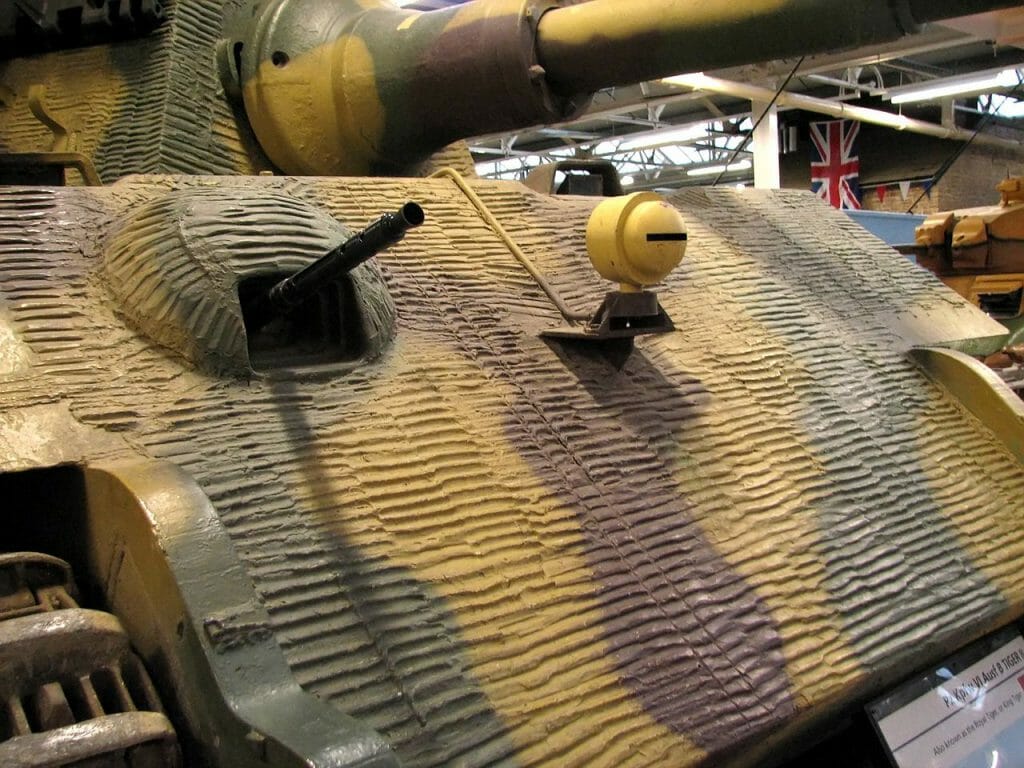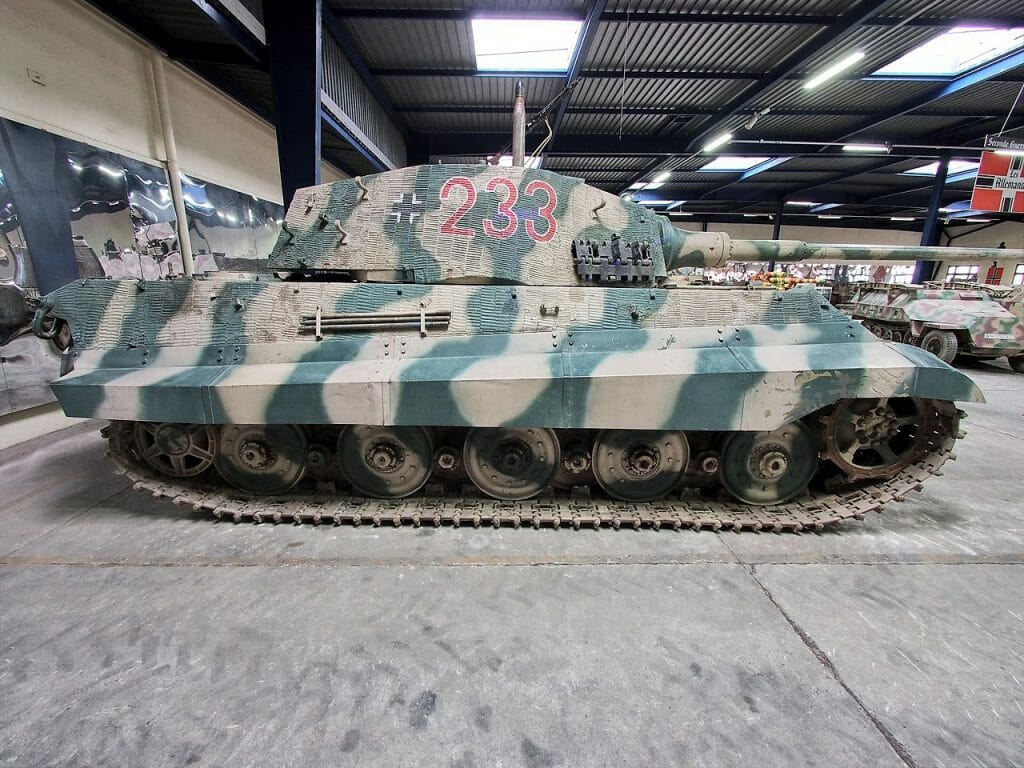You’ve probably noticed that some of the German WW2 armoured vehicles, such as tanks and self-propelled guns, feature this weird ridged surface. It is clearly not made from metal, but what is it? What is the function of this bizarre-looking design feature?
This is Zimmerit – a special coating, protecting tanks and other armoured vehicles from magnetically attached mines. It was introduced in December 1943 as a measure to eliminate the potential threat of magnetic explosives.
German officials were afraid that Soviet forces are going to start using magnetic anti-tank mines that would be highly effective in a chaotic battlefield. Someone just has to run by and stick an explosive device on one of the more vulnerable spots of the tank (for example, closer to the rear where the engine resides). Zimmerit was developed by the German company Chemische Werke Zimmer & Co and was meant to provide separation between the mine and the actual armour.

Zimmerit does not have some special anti-magnetic properties. It is just a thick coating, which prevents direct contact of magnetic mines with metal surfaces of vehicles. Zimmerit basically worked like a book between a fridge and a fridge magnet.
Zimmerit was actually rather simple in its recipe: barium sulfate (40 %), polyvinyl acetate (25 %), pigment such as ochre (15 %), zinc sulfide (10 %) and some sawdust (10 %). Although in a 50% benzene solution it was like a paste, Zimmerit dried to a hard surface. It was usually applied in factories where armoured vehicles were produced, but it could also be applied on the field as well in order to repair a damaged coating.

Of course, you’re probably interested in the texture of Zimmerit. These ridges were meant to increase the distance between the metal surface and the mine without further increasing the thickness of the coating. An explosive device would come in contact only with the top of these ridges. This texturing improved the effectiveness of the coating without increasing the amount of Zimmerit used. Zimmerit was rather heavy and weight savings were important even for tanks.
But Zimmerit coating was not always ridged – sometimes it was applied in squares, sometimes – in a waffle pattern. This depended on the factory- (for example, the waffle pattern was seen almost exclusively on Sturmgeschütz III assault guns.

Zimmerit was produced until 9th of September, 1944. It was decided to stop using this coating due to concerns that it could be set on fire. Zimmerit was not actually flammable and these concerns had no real basis. On the other hand, at that time production of armoured vehicles in Germany could not keep up with battlefield demands. Zimmerit took some time to dry even if blow torches were used to speed up the process. Germany didn’t have time to waste at the final stages of the War.
Also, although Zimmerit was effective against magnetic anti-tank mines, the soviets never started using magnetic explosives in any appreciable number. Eventually man-portable anti-tank guns made magnetic mines completely obsolete, which is why Zimmerit or any similar materials were not used after World War 2.




